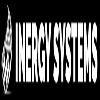In today’s fast-paced world, where technological advancements are transforming the way we live, the growing energy demand is becoming a significant concern. With rising energy costs, it has become more important than ever for individuals and businesses to take control of their energy consumption. Energy monitoring and management are essential tools in this endeavor. Not only do they help in identifying energy waste, but they also play a pivotal role in lowering APS electric bills. Let’s dive deeper into the importance of energy monitoring and management and how they serve as the first steps toward reducing energy costs.
What is Energy Monitoring?
Energy monitoring involves tracking and recording energy consumption in real time. This can be done through advanced meters or monitoring systems that provide detailed insights into when, where, and how energy is being used. By offering precise data, energy monitoring allows homeowners and businesses to analyze their energy use patterns, identify inefficiencies, and take corrective measures to avoid unnecessary energy consumption.
The Significance of Energy Monitoring
- Identifying Energy Drains: One of the primary benefits of energy monitoring is its ability to pinpoint specific areas where energy is being wasted. Whether it’s an appliance left running unnecessarily or an outdated HVAC system, real-time data allows users to recognize the energy hogs within their property. This awareness is the first step in reducing consumption and, ultimately, bills.
- Tracking Peak Usage Times: Many energy providers charge higher rates during peak usage times. By monitoring energy usage, individuals and businesses can identify when they consume the most energy and shift certain activities to off-peak hours, thereby saving on costs.
- Empowering Behavioral Change: When individuals or companies have access to clear and concise data about their energy consumption, it becomes easier to make informed decisions. Energy monitoring motivates to adopt energy-efficient habits, such as turning off lights when leaving a room or unplugging devices that are not in use.
- Immediate Feedback: Energy monitoring provides immediate feedback on energy-saving efforts. For example, if you upgrade to energy-efficient appliances or switch to LED lighting, energy monitoring tools will show an immediate drop in energy consumption, providing a clear indication of the savings achieved.
Energy Management: Beyond Monitoring
While monitoring energy use is essential, the real magic happens when monitoring is combined with effective energy management strategies. Energy management involves taking the insights gained from monitoring and implementing strategies to control, optimize, and reduce energy consumption.
How Energy Monitoring & Management Lead to Lower Bills
When combined, energy monitoring and management form a powerful duo in the fight against high energy costs. Monitoring provides the data necessary to identify where energy is being wasted, while management strategies help reduce that waste. By regularly tracking and managing energy use, individuals and businesses can save significant amounts of money on their energy bills.
Furthermore, energy-efficient practices often come with added benefits, such as reduced environmental impact and increased property value. Energy-efficient homes and businesses are more attractive to buyers, and adopting sustainable energy solutions reflects a forward-thinking, eco-friendly approach that resonates well with modern consumers.
Summing up, lowering energy bills is not just about cutting back; it’s about being smart with energy use. With the right strategies in place, anyone can take the first step towards a more energy-efficient future, all while enjoying the long-term benefits of lower APS electric bills and a more sustainable lifestyle.

